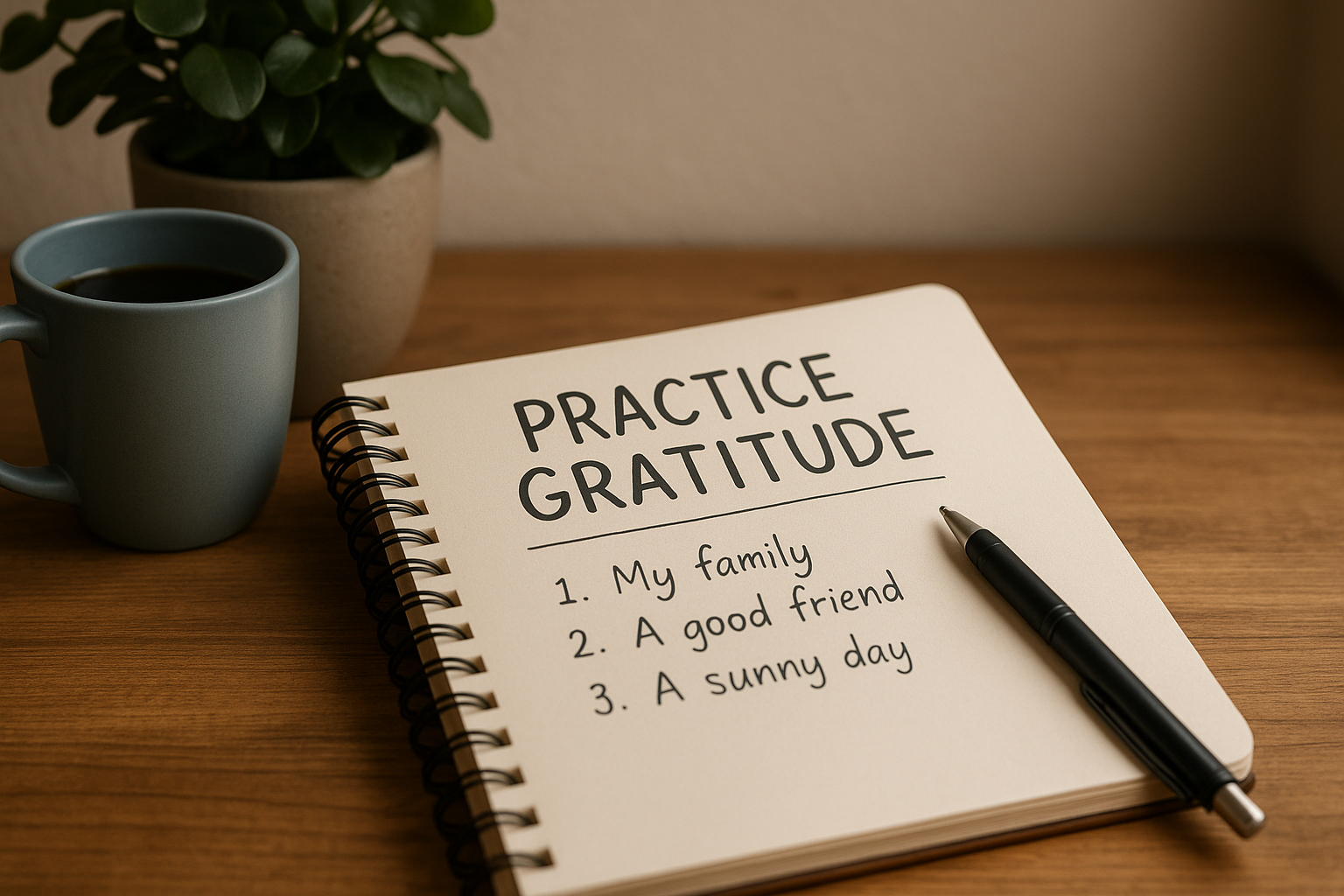Gratitude is more than a polite “thank you.” It’s a mindset and a daily practice that can reshape the way you view your life. When you learn to see the good, even in the midst of difficulty, you unlock powerful psychological and emotional benefits. In this article, we’ll explore how to develop a consistent gratitude practice that transforms your perspective and improves your overall well-being.
1. Understand the Power of Gratitude
Gratitude helps shift your focus from what’s lacking to what’s already present and positive in your life. Studies show that practicing gratitude can:
- Reduce stress and anxiety
- Improve sleep and mental clarity
- Strengthen relationships
- Boost self-esteem and resilience
By focusing on what you appreciate, you train your mind to seek positivity, even during challenging times.
2. Start a Daily Gratitude Journal
One of the simplest and most effective ways to practice gratitude is by writing it down. Set aside five minutes each day to jot down three things you’re grateful for. These can be big (like a job promotion) or small (a warm cup of coffee on a cold morning). The key is consistency.
Pro Tip: Try to avoid repeating the same items every day. Challenge yourself to notice new things to be grateful for—it sharpens your awareness.
3. Express Gratitude to Others
Saying “thank you” sincerely to others can deepen relationships and increase your sense of connection. Whether it’s a handwritten note, a phone call, or a kind message, expressing appreciation not only uplifts others but also boosts your own emotional health.
4. Practice Gratitude in the Moment
You don’t always need to write or speak to practice gratitude. Pause during your day and mentally recognize things you’re thankful for—a conversation, a meal, the sunshine. This “in-the-moment” awareness helps you stay grounded and positive, no matter your circumstances.
5. Turn Challenges into Lessons
Gratitude doesn’t mean ignoring problems—it means seeing value even in adversity. When facing difficulties, ask:
- What did I learn from this?
- How did it help me grow?
- Who supported me during this time?
This reframing helps you find meaning in hard times, reducing feelings of helplessness or resentment.
6. Avoid Comparison
Gratitude naturally increases when you stop comparing your life to others’. Social media can distort our perception of reality. Remind yourself that everyone has struggles, and what you see online is just a highlight reel. Focus on your unique journey and blessings.
7. Make It a Habit, Not a Task
Gratitude should become a way of living, not a chore. You don’t have to wait for something “big” to feel grateful. The more you practice, the more naturally gratitude will arise, helping you build emotional strength and inner peace.
8. Surround Yourself with Gratitude
Visual reminders can reinforce your practice. Place quotes or affirmations where you can see them daily—your mirror, fridge, or desk. Create an environment that encourages appreciation and reflection.
A New Lens on Life
Gratitude doesn’t erase hardship, but it gives you a powerful tool to face life with clarity, strength, and optimism. When you cultivate thankfulness, your perspective shifts—from focusing on problems to appreciating what’s working. Start today with one grateful thought, and you’ll begin to see the world in a whole new light.

